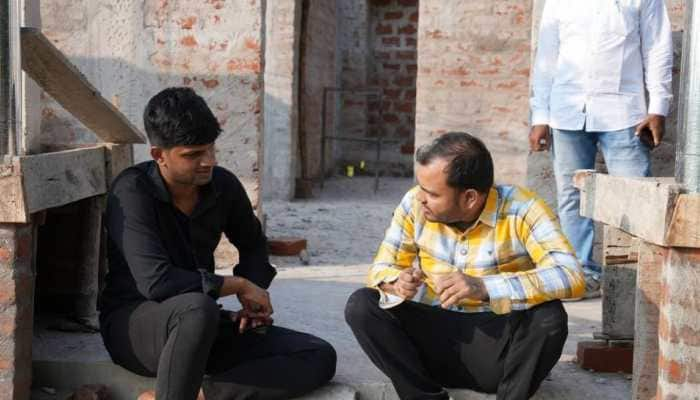RBI knives overall growth to 6.7% but says worst behind us
The Goods and Services Tax has led to some uncertainty in the manufacturing sector, which is likely to delay revival of investment activity, it said.
Trending Photos
)
Mumbai: The RBI on Wednesday slashed its current fiscal growth forecast to 6.7 percent on gross value-added basis, saying GST rollout glitches have hurt manufacturing in the first half but an uptick is expected in the second half.
The RBI had estimated the economy to clip at 7.3 percent on a GVA basis earlier. Even in the August policy review it had pegged growth at this high level. But then came in the first quarter reading which crashed to a three-year low of 5.6 percent.
"The projection of real GVA growth for FY18 has been revised down to 6.7 percent from the August projection of 7.3 percent, with risks evenly balanced," the RBI said in its fourth bimonthly monetary policy statement wherein it left the key policy rates unchanged.
It said the loss of momentum in the first quarter, when GDP slipped to a three-year low of 5.6 percent on a dip in manufacturing activity due to the GST rollout and the still lingering impact of the note ban, the first advance estimates of kharif production are early setbacks that impart a downside to the outlook.
The GST implementation so far also appears to have had adverse impact on growth, rendering an uncertain future for the manufacturing sector in the short term, the RBI said.
"This may further delay the revival of investment activity, which is already hampered by stressed balance-sheets of banks and corporates," the central bank said.
At the customary post-policy meeting, Governor Urjit Patel, however, said there are factors that have affected the growth in the second quarter of this year which will dissipate to ensure a faster growth in the second half.
"In recent days, high frequency indicators suggest that the growth is in the uptick. Core IIP released yesterday was 4.9 percent. In the second quarter, services sector has been showing healthy growth rate. So, there is a possibility that the cyclical upturn will happen in the next two quarters," Patel said.
Economists termed it as "an arithmetical" play, wherein a low number in the first quarter has made the central bank knife its growth forecast for the full year, even though the rest of the year will see a steady increase in the growth number.
In the monetary policy report, the RBI said it expects the GDP to grow at 6.4 percent in the second quarter and go up to 7.1 percent in the third quarter and scale up to 7.7 percent in the fourth quarter, to give a yearly average of 6.7 percent.
The central bank sounded optimistic on its FY2019 growth estimate pegging it at 7.4 percent, assuming normal monsoons.
The teething problems linked to GST rollout may get resolved relatively soon allowing growth to accelerate in the second half, Patel said.
Echoing sentiment, deputy governor Viral Acharya said, "it is too early. However, in my view and real time activity indicators do not yet paint the clear picture to be able to separate the transient component of this one quarter loss of momentum from the gradual decline in overall growth that has taken hold since Q1 of last fiscal."
"The long term trend is best explained by the deleveraging underway in the heavily indebted part of the corporate sector and in poor credit growth at public sector banks given they have inadequate capital relative to impending losses on their legacy assets," he said.
The Asian Development Bank too has lowered the growth projection to 7 percent for the current fiscal from its earlier estimate of 7.4 percent.
The real GVA growth slowed significantly in the June quarter, cushioned partly by the extensive front-loading of expenditure by the Centre, thus running up 96.1 percent of its fiscal deficit as of end August.
Growth in agriculture and allied activities also slackened quarter-on-quarter in the seasonal first quarter moderation, partly reflecting deceleration in the growth of livestock products, forestry and fisheries.
Industrial sector growth fell sequentially as well as on a y-o-y basis. The manufacturing sector, the dominant component of industrial GVA, grew by a pale 1.2 percent, the lowest in the last 20 quarters.
The RBI said the uneven spatial distribution of the monsoon was reflected in the first advance estimates of kharif production by the Union agriculture ministry, which were below the level of the previous year due to lower area sown under major crops including rice, coarse cereals, pulses, oilseeds, jute and mesta.
The central bank further said the assessment of food prices going forward is "largely favourable", though the first advance estimates of kharif output pose some uncertainties.
Stay informed on all the latest news, real-time breaking news updates, and follow all the important headlines in india news and world News on Zee News.
Live Tv







)
)
)
)
)
)
)
)
)
)
